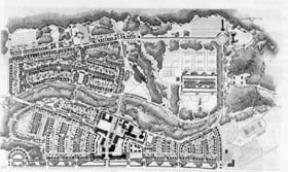The City Council was updated on the Salishan HOPE VI project during Tuesdays study session, where the main topic of discussion was the need for flexibility in the application of Tacomas development regulations.
City officials and staff related to the Salishan project were on hand to make their case and provide details on the massive revitalization plan that aims to transform one of the citys poorest neighborhoods into a mixed-income, mixed-use area that will promote socio-economic development.
The sheer size and scope of the redevelopment – $200 million on 200 acres of property in Tacomas East Side – have created the need for some latitude when it comes to applying the citys development regulations, officials said.
This has created a situation where we need to be flexible to make this happen, said Juli Wilkerson, Tacoma Economic Development Director.
We will need your help to make it a success, Tacoma Housing Authority Executive Director Peter Ansara told the City Council. We cant do it ourselves.
Plans call for tearing down the 855 units of the building first constructed as cheap temporary housing for World War II defense workers and replaced with 1,300 to 1,500 new units and amenities such as retail space, a health clinic and an education and technology center.
Were doing two thing: physical change and socio-economic change, explained Bruce Lorig, founder and lead partner in Lorig Associates, a real estate development company that has signed on the the Salishan project.
Goals of the project include providing a pedestrian friendly area, a reduction of setbacks and population density, the building of a stormwater retention system and a mix of unit types, Lorig said.
Construction will take place in three phases over the next seven-to-10 years, he said.
Noting the massive nature of the project, Lorig said, We dont quite fit into your development regulations at this time, due to size and scope.
Fortunately, there is a statute – passed in the 1930s – on the books that allows for such flexibility, according to Bill Lynn, a land use attorney with Gordon Thomas Honeywell Malanca Peterson & Daheim.
Any changes that needed to be made with regard to the Salishan project and Tacomas development regulations would have to go through staff, a hearing examiner and ultimately a vote by the City Council, Lynn said.
Flexibility is necessary to accommodate innovative design, existing infrastructure and mixed housing types.
He pointed to setback lengths, height limitations and street width requirements as some of the things in the Salishan project that might not meet strict development regulations.
Those are some examples, Lynn said.
There could be a mismatch between planning and changing lot lines as circumstances warrant, Lorig said.
Lynn said the Salishan project would be procedurally more difficult and cost more money if such flexibility was not obtained, although he noted it would still be possible to carry out the plan.
The project wouldnt end up as good as it could be, he said.
Startup money for the project came from a $35 million HOPE VI grant from the federal Housing and Urban Development (HUD) that was awarded in 2000 and executed in April 2001.
HOPE is an acronym for Housing Opportunities for People Everywhere.
The HOPE VI concept is a HUD program that supports redevelopment and replacement of public housing.
It encourages local housing authorities to seek partnerships with private groups to provide affordable mixed-use and mixed-income housing.
Funding for the project comes from low income housing tax credits, tax exempt volume cap bonds, home ownership sales, Community Development Block Grants and various other sources.
Phase I of the project is to be completed by the end of 2006 or beginning of 2007, according to Lorig.
We break ground next year, Ansara said.
Phase II and Phase III are planned to be completed by 2009 and 2011, respectively, Lorig said.
Mayor Bill Baarsma characterized the Salishan project as one of the most exciting of many projects in Tacoma, saying it would draw people from around the state, region and nation.





